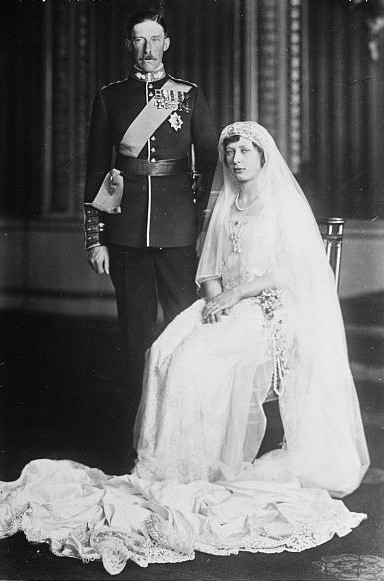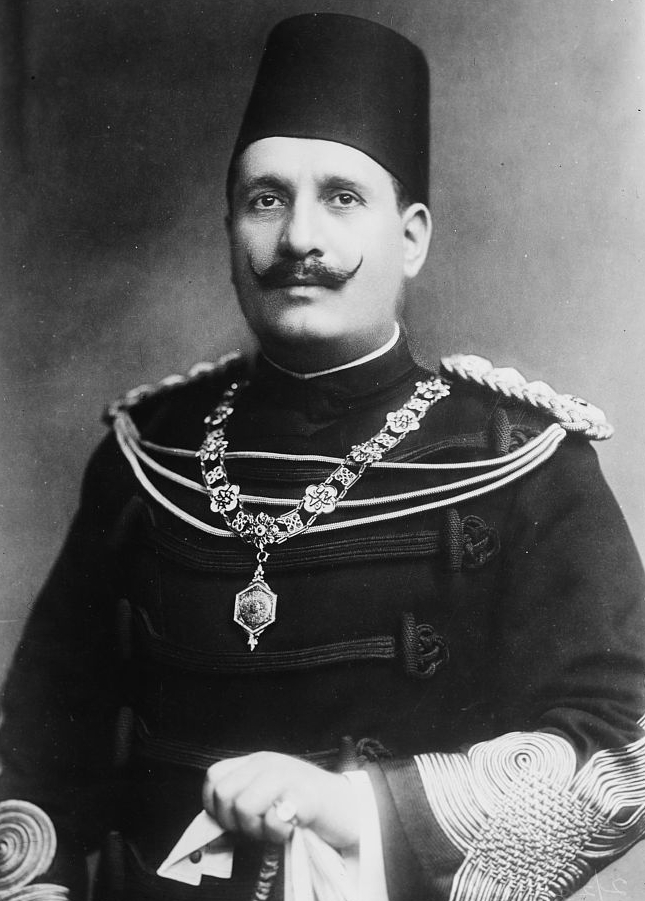by Susan Flantzer
© Unofficial Royalty 2025

Palace Chapel at Ludwigsburg Palace; Credit – Ludwigsburg Residential Palace
Württemberg was a County, a Duchy, and an Electorate before becoming a Kingdom in 1806. It is now part of the German state of Baden-Württemberg. The Palace Chapel (Schlosskapelle in German) at Ludwigsburg Palace in Ludwigsburg, Baden-Württemberg, Germany was the place of worship and the traditional burial site of the Württemberg family since it was built in the early 1700s. The first King of Württemberg, Friedrich I, was the last ruler buried in the Palace Chapel at Ludwigsburg Palace. His son and successor, the childless King Karl I is buried in the Schlosskirche at the Old Castle (Altes Schloss) in Stuttgart. Wilhelm II, the last King of Württemberg, King Friedrich I’s grandson, is buried in the Old Cemetery on the grounds of Ludwigsburg Palace.

Ludwigsburg Palace; Credit – By Maulaff – Own work, CC BY-SA 4.0, https://commons.wikimedia.org/w/index.php?curid=149007837
Ludwigsburg Palace was expanded from a small hunting lodge to a monumental four-wing palace with 452 rooms between 1704 and 1816. The construction of Ludwigsburg Palace began during the reign of Eberhard Ludwig, Duke of Württemberg who laid the foundation in 1704. He allowed the workers to reside for free around the palace construction. Five architects worked on Ludwigsburg Palace over the years – Philipp Joseph Jenisch (link in German), Johann Friedrich Nette, Donato Giuseppe Frisoni, Philippe de La Guêpière, and Nikolaus Friedrich von Thouret. As a result of each architect’s work, Ludwigsburg Palace is a combination of Baroque, Rococo, Neoclassical, and Empire-style architecture.

The Courtyard of Ludwigsburg Palace; Credit – By Gregorini Demetrio, CC BY-SA 3.0, https://commons.wikimedia.org/w/index.php?curid=52233396

The ceiling painting “Glorification of the Holy Trinity” by Carlo Carlone; Credit – Ludwigsburg Residential Palace
Unusually opulent for a Protestant church, the Schlosskapelle (Palace Chapel) is located in the East Wing of Ludwigsburg Palace. It was designed by Italian architect Donato Giuseppe Frisoni and built from 1716 to 1724. Frisoni designed a two-story church interior that was circular instead of longitudinal. The rotunda of the chapel had three semi-domes. The chapel was painted by Donato Giuseppe Frisoni, Luca Antonio Colomba, Livio Retti, and Carlo Carlone, who were all restricted to Protestant doctrine for the subjects of their painting. The central dome is covered by an impressive ceiling painting “The Glorification of the Holy Trinity” by the painter Carlo Carlone.

The Ducal Box; Credit – Ludwigsburg Residential Palace
The Ducal Box Seat, painted with the biblical story of David by Livio Retti, was accessible to the ruling family directly from the second floor of their living quarters. The members of the court sat in the side galleries of the chapel.

Eberhard Ludwig, Duke of Württemberg – Ludwigsburg Palace’s construction started during his reign; Credit – Wikipedia
The Palace Chapel changed religious denominations depending on whether the ruler was Protestant or Catholic. Eberhard Ludwig, Duke of Württemberg, a Protestant, built it as a Protestant chapel. However, it became a Catholic chapel under the Catholic rulers Karl Alexander, Duke of Württemberg and Carl Eugen, Duke of Württemberg. King Friedrich I redecorated the Palace Chapel in 1798 as a Protestant chapel. Today, the Palace Chapel is a Catholic chapel.
Burials in the Royal Crypt in the Pastle Chapel at Ludwigsburg Palace
Eberhard Ludwig, Duke of Württemberg had a crypt built for the Württemberg family under the Palace Chapel
- Hereditary Prince Friedrich Ludwig of Württemberg (1698 – 1731), son of Eberhard Ludwig, Duke of Württemberg
- Eberhard Louis, Duke of Württemberg (1676 – 1733)
- Karl Alexander, Duke of Württemberg (1684 – 1737)
- Friederike of Württemberg (1750 – 1751), infant daughter of Carl Eugen, Duke of Württemberg
- Marie-Auguste of Thurn and Taxis, Duchess of Württemberg (1706 – 1756), wife of Karl Alexander, Duke of Württemberg
- Johanna Elisabeth of Baden-Durlach, Duchess of Württemberg (1680 – 1757), wife of Eberhard Ludwig, Duke of Württemberg
- Elisabeth Friederike Sophie of Brandenburg-Bayreuth, Duchess of Württemberg (1732 – 1780), wife of Carl Eugen, Duke of Württemberg
- Sophie Dorothea of Württemberg (1783 – 1784), infant daughter of the future Friedrich I, King of Württemberg
- Augusta Elisabeth of Württemberg, Princess of Thurn and Taxis (1734 – 1787), daughter of Karl Alexander, Duke of Württemberg
- Carl Eugen, Duke of Württemberg (1728 – 1793)
- Ludwig Eugen, Duke of Württemberg (1731 – 1795)
- Friedrich Eugen, Duke of Württemberg (1732 – 1797)
- Friederike Dorothea Sophia of Brandenburg-Schwedt, Duchess of Württemberg (1736 – 1798), wife of Friedrich Eugen, Duke of Württemberg
- Sophie Albertine of Beichlingen, Duchess of Württemberg (1728 – 1807), wife of Ludwig Eugen, Duke of Württemberg
- Prince Paul (1809 – 1810), infant son of Prince Paul of Württemberg
- Friedrich I, King of Württemberg (1754 – 1816)
- Charlotte, Princess Royal, Queen of Württemberg (1766 – 1828), 2nd wife of Friedrich I, King of Württemberg and eldest daughter of King George III of the United Kingdom
- Catherina of Württemberg, Queen of Westphalia (1783 – 1835), daughter of Friedrich I, King of Württemberg
- Charlotte of Saxe-Altenburg (1787 – 1847), wife of Prince Paul of Württemberg
- Prince Paul of Württemberg (1785 – 1852), son of Friedrich I, King of Württemberg
- Théodelinde de Beauharnais, Duchess of Urach (1814 – 1857), 1st wife of Wilhelm I, Duke of Urach
- Eugenie of Württemberg (1848 – 1867), daughter of Wilhelm I, Duke of Urach
- Wilhelm I, Duke of Urach (1810 – 1869)
- Prince Friedrich of Württemberg (1808 – 1870), husband of Princess Katharina of Württemberg
- Maria Sophia of Thurn and Taxis (1800 – 1870), wife of Duke Paul Wilhelm of Württemberg (divorced)
- Pauline of Württemberg, Queen of Württemberg (1800 – 1873), third wife of Wilhelm I, King of Württemberg
- Prince August of Württemberg (1813 – 1885), son of Prince Paul of Württemberg
- Duke Maximilianof Württemberg (1828 – 1888), son of Duke Paul Wilhelm of Württemberg
- Florestine of Monaco, Duchess of Urach (1833 – 1897), 2nd wife of Wilhelm I, Duke of Urach
- Princess Katharina of Württemberg (1821 – 1898), daughter of Wilhelm I, King of Württemberg
- Princess Maria Gabriela of Urach (1893 – 1908), daughter of Wilhelm II, Duke of Urach
- Amalie in Bavaria, Duchess of Urach (1865 – 1912), 1st wife of Wilhelm II, Duke of Urach
- Duke Philipp of Württemberg (1838 – 1917), son of Duke Alexander II of Württemberg
- Prince Karl Joseph of Urach (1865 – 1925), son of Wilhelm I, Duke of Urach
- Wilhelm II, Duke of Urach (1864 – 1928), son of Wilhelm I, Duke of Urach
- Hermine of Schaumburg-Lippe, Duchess of Württemberg (1845 – 1930), wife of Duke Maximilian of Württemberg
Works Cited
- Autoren der Wikimedia-Projekte. (2004). ehemaliges Residenzschloss der Herzöge und Könige von Württemberg. Wikipedia.org; Wikimedia Foundation, Inc. https://de.wikipedia.org/wiki/Residenzschloss_Ludwigsburg
- Ludwigsburg Residential Palace: Staatliche Schlösser und Gärten Baden-Württemberg. (n.d.). Www.schloss-Ludwigsburg.de. https://www.schloss-ludwigsburg.de/en/
- Palace Chapel: Staatliche Schlösser und Gärten Baden-Württemberg. (2025). Schloss-Ludwigsburg.de. https://www.schloss-ludwigsburg.de/en/visitor-experience/palace-garden/buildings/palace-chapel
- Wikipedia Contributors. (2024). Ludwigsburg Palace. Wikipedia; Wikimedia Foundation.









